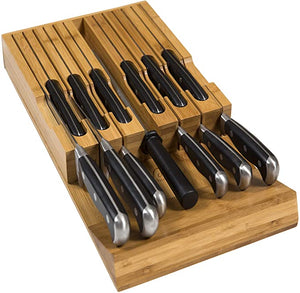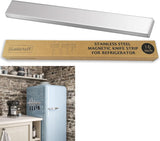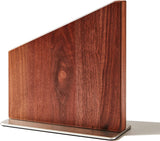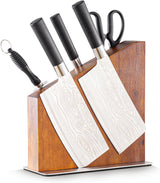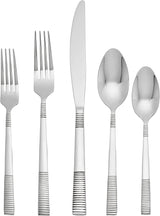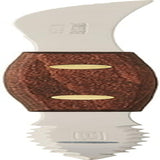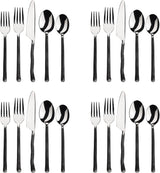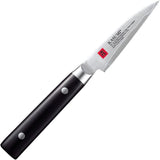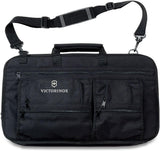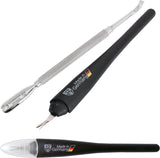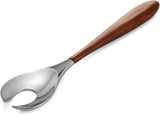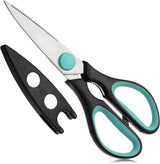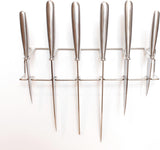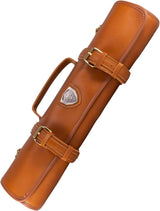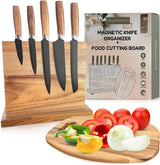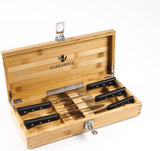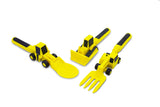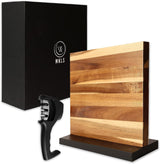For kitchen professionals, a well-maintained knife is not just a tool, but an extension of their hand. Among the various types of knives, Japanese knives are renowned for their precision, sharpness, and high-quality material. Knowing how to sharpen a Japanese knife is crucial for maintaining its superior performance and ensuring safety in the kitchen.
In this detailed guide, we'll explore the techniques and nuances of keeping a Japanese knife razor-sharp. Whether you're a seasoned chef or a culinary enthusiast, understanding the art of sharpening these knives is essential. The process involves more than just honing the blade; it includes understanding the knife's material, the sharpening equipment, and the right techniques.

Understanding Japanese Knives
Japanese knives are crafted with precision and excellence, tailored to meet the high demands of professional kitchens. Their unique steel composition and exquisite craftsmanship allow for finer and more precise cuts. Each knife is a work of art and science, combining traditional techniques with modern technology. Learning how to sharpen a Japanese knife correctly honors this tradition and enhances your culinary skills.
Understanding the types of Japanese knives, such as the Santoku and Gyuto, can also inform how you approach sharpening. For instance, a Santoku knife, often used for slicing, dicing, and chopping, might require a finer edge compared to other types.
Choosing the Right Tools for Sharpening
To effectively sharpen your Japanese knife, you'll need the right tools. Whetstones are the preferred choice for many professional chefs due to their ability to provide a fine and controlled edge. These stones come in different grits, which affect the sharpness of the blade. A lower grit number indicates a coarser stone, suitable for reshaping the blade, while a higher grit number provides a polished finish.
Aside from whetstones, understanding the right angle is crucial. Japanese knives often have a sharper edge compared to their Western counterparts, usually set around 15-16 degrees. Achieving this angle requires practice and attention to detail.
The Sharpening Process
Sharpening a Japanese knife involves several steps. Begin by soaking the whetstone in water until it stops releasing bubbles, ensuring it's adequately lubricated. Hold the knife at the correct angle and draw it across the stone in smooth, even strokes. Consistency is key; maintain the same number of strokes for each side to ensure balance.
Once the rough grit has been used to shape the edge, proceed with a finer grit to polish and refine. Regularly check the blade's sharpness with controlled cuts on paper or vegetables, and adjust your technique as needed.
Caring for Your Knife
Proper maintenance extends beyond sharpening. Regularly clean your knife post-use to prevent rust and damage. You can refer to guides on how to clean a knife for detailed instructions to maintain its shine and longevity.
Storing your knife correctly is also vital. Consider using a magnetic strip or dedicated knife block to prevent unnecessary dulling or chipping of the blade.
Common Mistakes to Avoid
Even professionals can make errors when sharpening knives. Avoid applying excessive pressure, which can damage the blade. Additionally, using the wrong grit size for the task at hand can either result in inadequate sharpness or unnecessary wear on the blade.
It's also important to avoid sharpening your knife too frequently. Over-sharpening can reduce the lifespan of your knife, affecting both its performance and structural integrity.
Resources for Further Learning
Continuing your education on knife care is invaluable. You can explore various resources, such as blogs discussing knife brands, like whether Carote knives suit your needs, or dive into types, as discussed in different types of kitchen knives and their uses.
Conclusion
Mastering how to sharpen a Japanese knife elevates your culinary prowess and ensures your tools are always ready for action. From selecting the right whetstone to perfecting your sharpening technique, each aspect contributes to maintaining the precision and efficiency of these extraordinary knives.
For kitchen professionals, dedicating time to perfect this skill will undoubtedly reflect in the quality of their culinary creations. Explore different techniques and resources, and never stop learning. Remember, a sharp knife is not just safer, but also a testament to a chef's dedication and craft.

FAQ
What is the best angle to sharpen a Japanese knife?
The ideal angle for sharpening a Japanese knife is between 15 to 16 degrees. This angle helps maintain the knife's precision and sharpness.
How often should I sharpen my Japanese knife?
It depends on the knife's use; however, regular home cooks should aim to sharpen their knives every few months, whereas professional chefs may sharpen theirs more frequently, based on usage.
Can I use a knife sharpener instead of a whetstone?
While electric knife sharpeners are available, professional chefs often prefer whetstones for their control and ability to produce a refined edge, which is essential for Japanese knives.
This article contains affiliate links. We may earn a commission at no extra cost to you.
